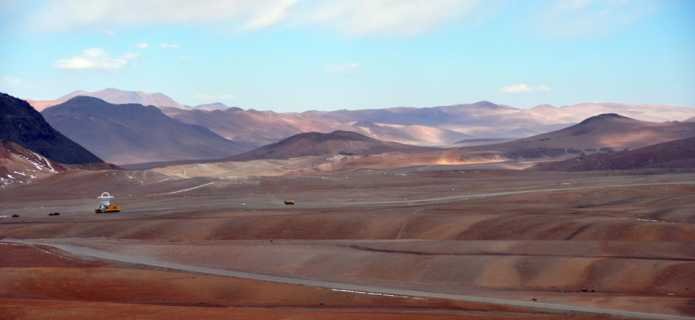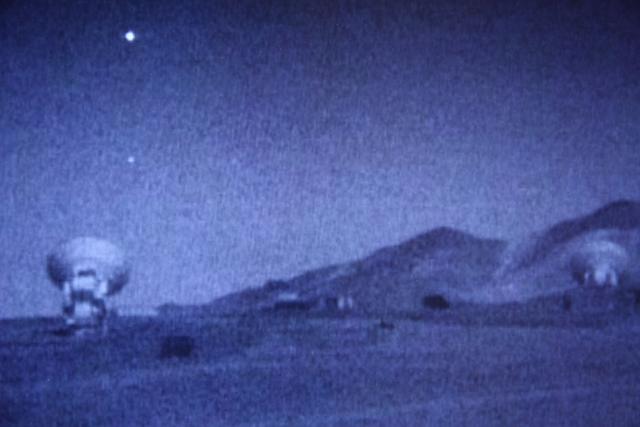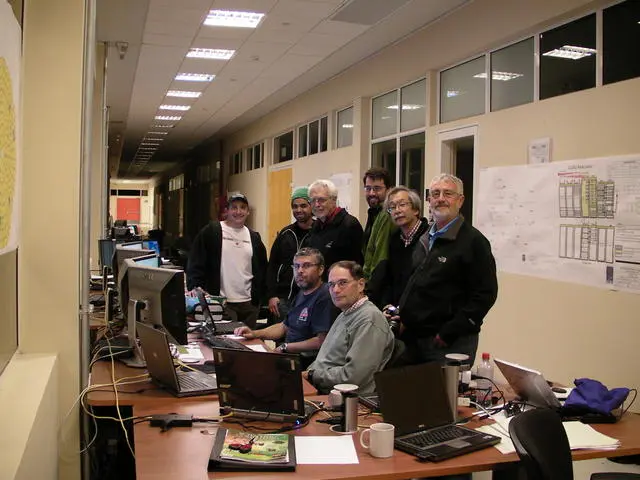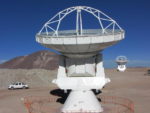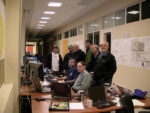ALMA First Fringes at Chajnantor
A team of astronomers and engineers at ALMA have made interferometric measurements of radio signals from an astronomical source from the observatory’s "high site", which is at an altitude of 5000 meters. These observations used the full suite of the production equipment that has been developed for ALMA, including two high-precision 12-meter diameter antennas and sophisticated electronic systems for receiving and correlating the signals. This is the first time that all these complex items, almost all of which are at the leading edge of technology, have been used together as a complete system.
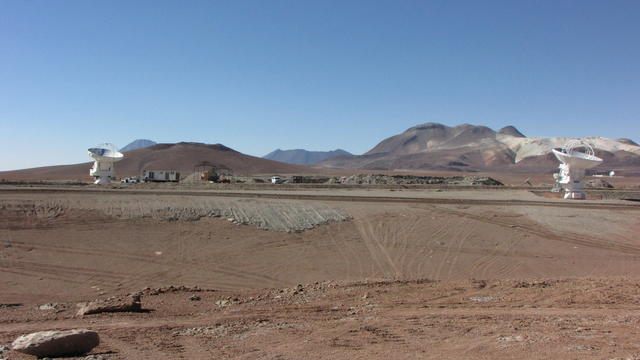
AOS (Array Operations Site) Interferometer. Credit: Alvaro Quintana and Jose Olivares - ALMA (ESO/NAOJ/NRAO)
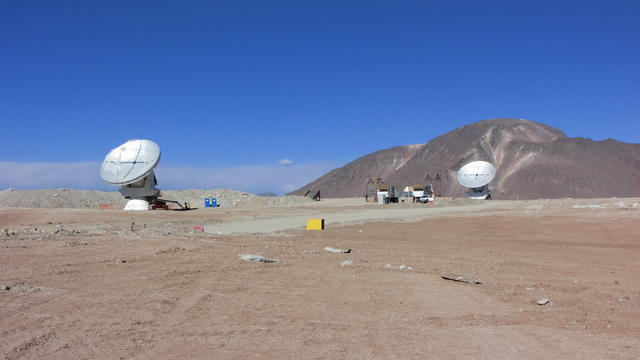
AOS (Array Operations Site) Interferometer. Credit: Alvaro Quintana and Jose Olivares - ALMA (ESO/NAOJ/NRAO)
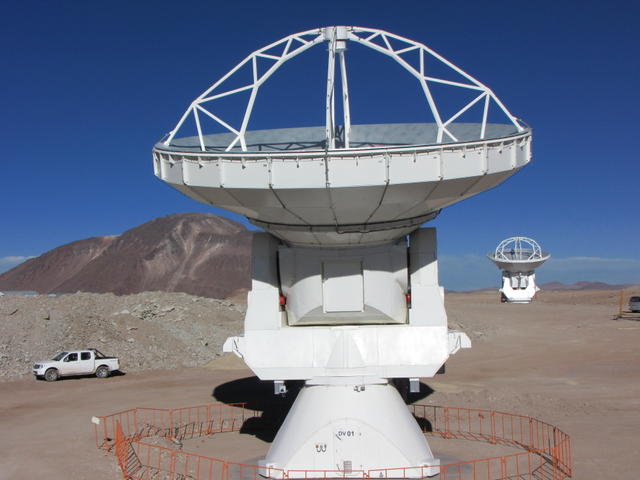
AOS (Array Operations Site) Interferometer. Credit: Alvaro Quintana and Jose Olivares - ALMA (ESO/NAOJ/NRAO)
The antennas were moved into position on 16th and 17th October and work to check them and connect them to the rest of the system started immediately. By the 21st everything was in place to make the first trials of the whole system. This effort was led by Robert Lucas with Tzu-Chiang Shen, Rodrigo Araya, Rodrigo Olguin, Juan Pablo Caram and Antonio Hales. Late that night they were able to detect “fringes” (the effect seen when signals coming through the two antennas arrive at the final detector with exactly the right timing) from two well-known objects - the Orion molecular cloud and the active galactic nucleus 3C84. This was followed by experiments to determine accurately the distance between the antennas (the “baseline”) which came out at 159.8331+/– 0.0005 meters and the difference in the time the signals take to travel to the central building (the “delay”) which was 1959.642 +/– 0.02 nanoseconds. At the same time the equipment and connections needed to enable operation at higher frequencies was being checked out. A large number of people have contributed to these efforts, which were led by the AIV (Assembly, Integration and Verification), CSV (Commissioning and Science Verification)and Science Operations teams. The following figures illustrate fringes obtained on the ALMA Bands 3 (86.243 GHz) and 6 (230.538 GHz) on the source 0538-440 and Band 7 (345.796 GHz) on the source 3C454.3.
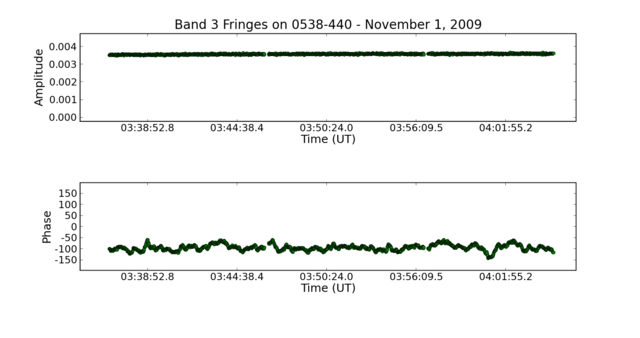
Amplitude (top) and Phase (bottom) plots (using CASA) of 0538-440 at 86.243 GHz. Credit: ALMA (ESO/NAOJ/NRAO)
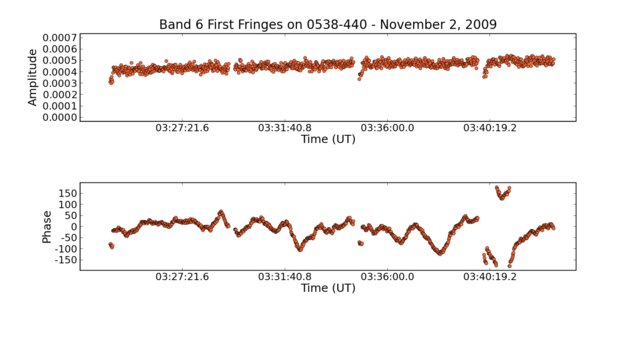
Amplitude (top) and Phase (bottom) plots (using CASA) of 0538-440 at 230.538 GHz. Credit: ALMA (ESO/NAOJ/NRAO)
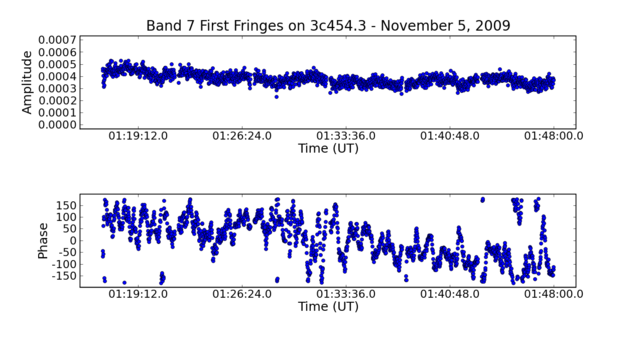
Amplitude (top) and Phase (bottom) plots (using CASA) of 3C454.3 at 345.796 GHz. Credit: ALMA (ESO/NAOJ/NRAO)
The last of these results is particularly notable since it was the first time that ALMA equipment has detected fringes at a wavelength of less than 1mm, so ALMA is now truly a “submillimeter” telescope and not just a millimeter-wave one. What is clearly seen in the data is that the phase of the fringe varies a great deal more at the high frequencies than at the low ones. This is what would be expected as a result of fluctuations in the atmosphere. ALMA is equipped with systems for correcting such fluctuations but these were not brought into operation for these first tests.
In order to generate the fringes, which are the first step towards making detailed images of the astronomical objects being observed, the signals are acquired and processed by the antenna system detectors and electronics and then transmitted along fibers to the ALMA Operations Site Technical Building where they are correlated and stored in the archive.
The software and hardware that is now in operation at the high site includes:
- The full suite of ALMA software including the observing tool, control software, telescope calibration software, quick look, archive and analysis software (CASA)
- Two 12-m antennas
- Front Ends
- Water Vapor Radiometers
- Amplitude Calibration Devices
- Production Back End system which includes LO photonic receivers and the antenna and data receiver articles
- The 1st Quadrant of the production correlator (subset of the full correlator which supports up to 16 antennas)
- The AOS (Array Operations Site) laser local oscillator system
These results reflect the successful efforts of all of the geographically distributed ALMA teams.
All of the participants in this endeavour receive the hearty congratulations of the ALMA Project, and are now looking forward to the next step in the process. Project Scientist Richard Hills stated "Although all of the components that make up the integrated ALMA telescope are thoroughly tested prior to being sent to the AOS, the coherent detection of these sources from the high site using all of the combined equipment represents a unique test of the system as a whole. This successful operation means that many of the problems associated with getting cutting-edge technology working in such harsh conditions have been solved. We are very much looking forward to adding the third antenna which will allow us to verify more of the software and hardware by obtaining phase closure."
